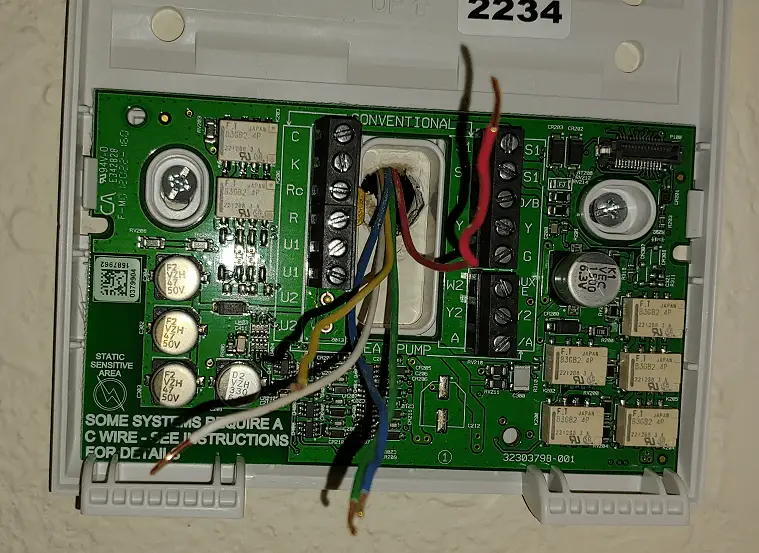Every time I install a new thermostat, before I mount it on the wall, I put my nose and mouth as close as possible to the hole in the wall to feel if there is air coming in through that hole in the wall. That part of your face is very sensitive to cool air.
If it’s an old house and the wind is blowing I can guarantee some of that wind is working it’s way into the attic and down the walls through all the holes that the electricians and plumbers drilled, and creating a draft behind your thermostat. Thermostats go crazy when that cold winter air or hot summer air hits them in the b-hind.

More recent codes require those holes in the top and bottom plates of a wall to be foamed, preventing air infiltration. But that’s a tough and sometimes nasty job in an older home. How about an alternative or temporary plan that could keep you out of the attic or crawl space?
Make a nice wooden plaque just slightly larger or more if you like, than your thermostat. Turn off the power to your furnace. Remove your thermostat from it’s subbase. Take a picture of the wiring so you can be sure it goes back together the right way. Loosen the wiring from the subbase and remove the subbase from the wall.
Make sure that the thermostat wire doesn’t fall down inside the wall. Tie a knot in the wire or hang something on it if it feels like it’s going to take a dive into the wall. I’ve lost stat wires down into a wall, it’s not fun to get it back up into the hole.
Beautify your plaque anyway you please, paint it, stain it, or do whatever to satisfy your taste. On your plaque, drill a hole just large enough for a thermostat wire to be pulled through. Fish the thermostat wire through the plaque and secure the plaque to the wall. Use a little caulking or something to seal the hole completely if necessary.
Reinstall the subbase and attach the stat wires while being sure to follow your picture. Make nice clean connections and try not to leave bare wires that could touch each other and short out the fuse in your furnaces circuit board. Clip the wires if necessary and strip the ends to the right length.
An advantage to having your thermostat on this plaque is that it moves the stat slightly away from the wall and into the room where it can better sense the room temperature rather than the wall. Only a slight amount though. The big advantage is no airflow giving false temperature to your stat.
Hopefully someday you can foam all those top and bottom plates to get even better control of the atmosphere in your home.
Turn on the power to your furnace and enjoy some comfort.
How Do I Insulate Behind My Thermostat?
Ask yourself, what would be better? Blocking all the holes that let air in or adding insulation? Do you realize that air will blow through loose fill blown in and batt and roll insulation. So if you’re going to insulate behind a thermostat, adding insulation is not a complete solution. You need to seal the area.
Now ask yourself a couple of questions:
- Do I need to seal a thermostat housing?
- what can I use to seal a thermostat housing?
So in my ever to humble opinion, seal that air off going into the back of the thermostat asap. Your thermostat is likely on an inside wall. Inside walls are rarely insulated anyway. If your thermostat is on an outside wall, move it if you can.
One of the tricks I’ve used for years is to take a chunk of toilet paper and soak it in water. You’ll have to use your own skills to decide how much. Tighten up the ball of wet TP and work it into the hole. The cool thing is that the TP hardens like a rock conforming to the hole as it dries. Makes a great seal. This doesn’t work well with large holes. Maybe plumbers putty or something more substantial.

